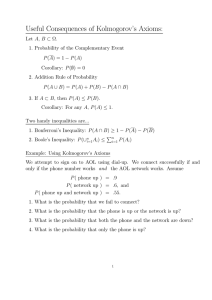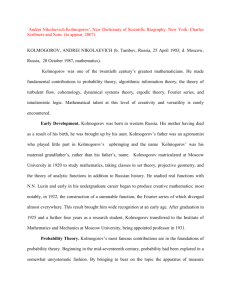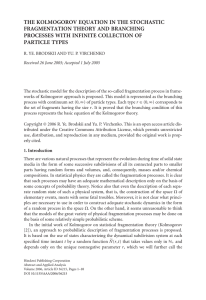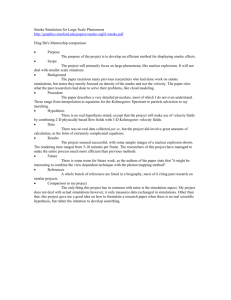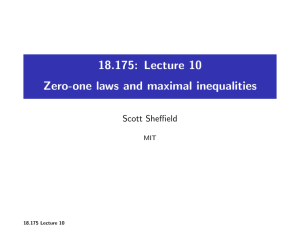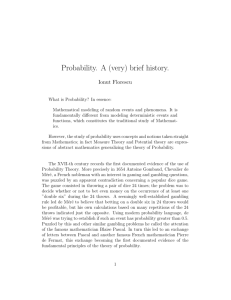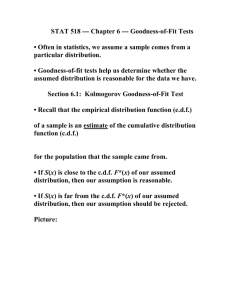Stat/219 Math 136 - Stochastic Processes Note on Continuity of
advertisement
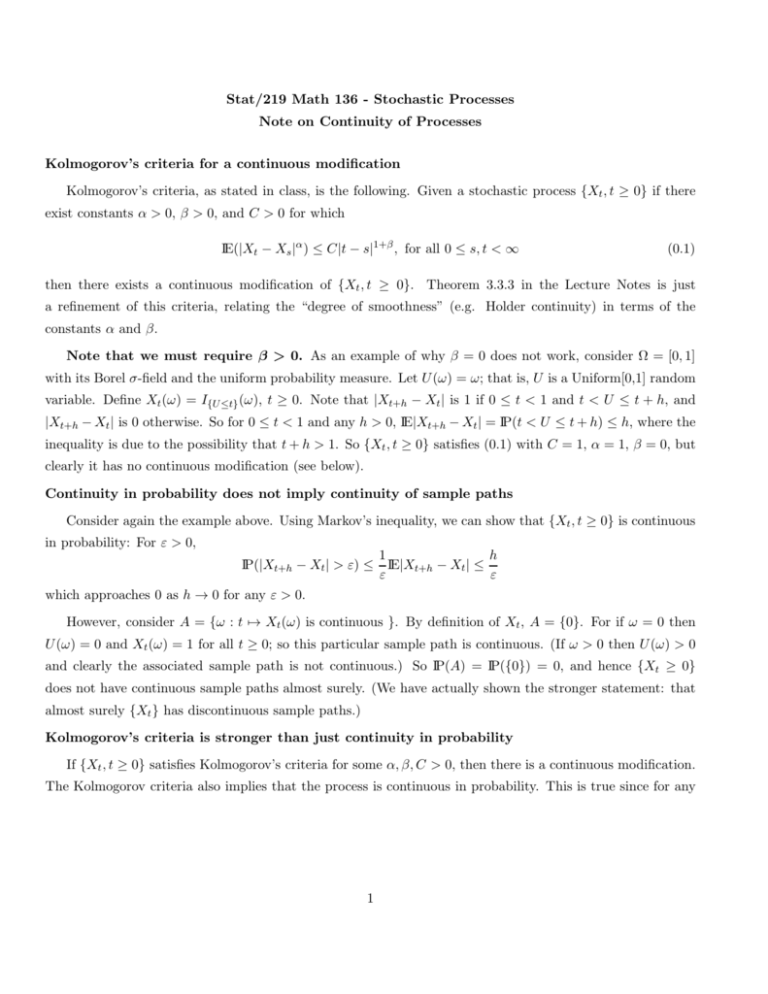
Stat/219 Math 136 - Stochastic Processes
Note on Continuity of Processes
Kolmogorov’s criteria for a continuous modification
Kolmogorov’s criteria, as stated in class, is the following. Given a stochastic process {Xt , t ≥ 0} if there
exist constants α > 0, β > 0, and C > 0 for which
IE(|Xt − Xs |α ) ≤ C|t − s|1+β , for all 0 ≤ s, t < ∞
(0.1)
then there exists a continuous modification of {Xt , t ≥ 0}. Theorem 3.3.3 in the Lecture Notes is just
a refinement of this criteria, relating the “degree of smoothness” (e.g. Holder continuity) in terms of the
constants α and β.
Note that we must require β > 0. As an example of why β = 0 does not work, consider Ω = [0, 1]
with its Borel σ-field and the uniform probability measure. Let U (ω) = ω; that is, U is a Uniform[0,1] random
variable. Define Xt (ω) = I{U ≤t} (ω), t ≥ 0. Note that |Xt+h − Xt | is 1 if 0 ≤ t < 1 and t < U ≤ t + h, and
|Xt+h − Xt | is 0 otherwise. So for 0 ≤ t < 1 and any h > 0, IE|Xt+h − Xt | = IP(t < U ≤ t + h) ≤ h, where the
inequality is due to the possibility that t + h > 1. So {Xt , t ≥ 0} satisfies (0.1) with C = 1, α = 1, β = 0, but
clearly it has no continuous modification (see below).
Continuity in probability does not imply continuity of sample paths
Consider again the example above. Using Markov’s inequality, we can show that {Xt , t ≥ 0} is continuous
in probability: For ε > 0,
IP(|Xt+h − Xt | > ε) ≤
1
h
IE|Xt+h − Xt | ≤
ε
ε
which approaches 0 as h → 0 for any ε > 0.
However, consider A = {ω : t 7→ Xt (ω) is continuous }. By definition of Xt , A = {0}. For if ω = 0 then
U (ω) = 0 and Xt (ω) = 1 for all t ≥ 0; so this particular sample path is continuous. (If ω > 0 then U (ω) > 0
and clearly the associated sample path is not continuous.) So IP(A) = IP({0}) = 0, and hence {Xt ≥ 0}
does not have continuous sample paths almost surely. (We have actually shown the stronger statement: that
almost surely {Xt } has discontinuous sample paths.)
Kolmogorov’s criteria is stronger than just continuity in probability
If {Xt , t ≥ 0} satisfies Kolmogorov’s criteria for some α, β, C > 0, then there is a continuous modification.
The Kolmogorov criteria also implies that the process is continuous in probability. This is true since for any
1
ε>0
IP(|Xt − Xs | > ε) ≤
≤
1
IE(|Xt − Xs |α ) by Markov’s inequality
εα
C
|t − s|1+β by Kolmogorov’s criteria
εα
Since β > 0, this last term approaches 0 as |t − s| → 0. Therefore the process is continuous in probability.
What is stronger about the Kolmogorov criteria is that it puts a requirement (in terms of α and β) on the
rate of convergence.
2
